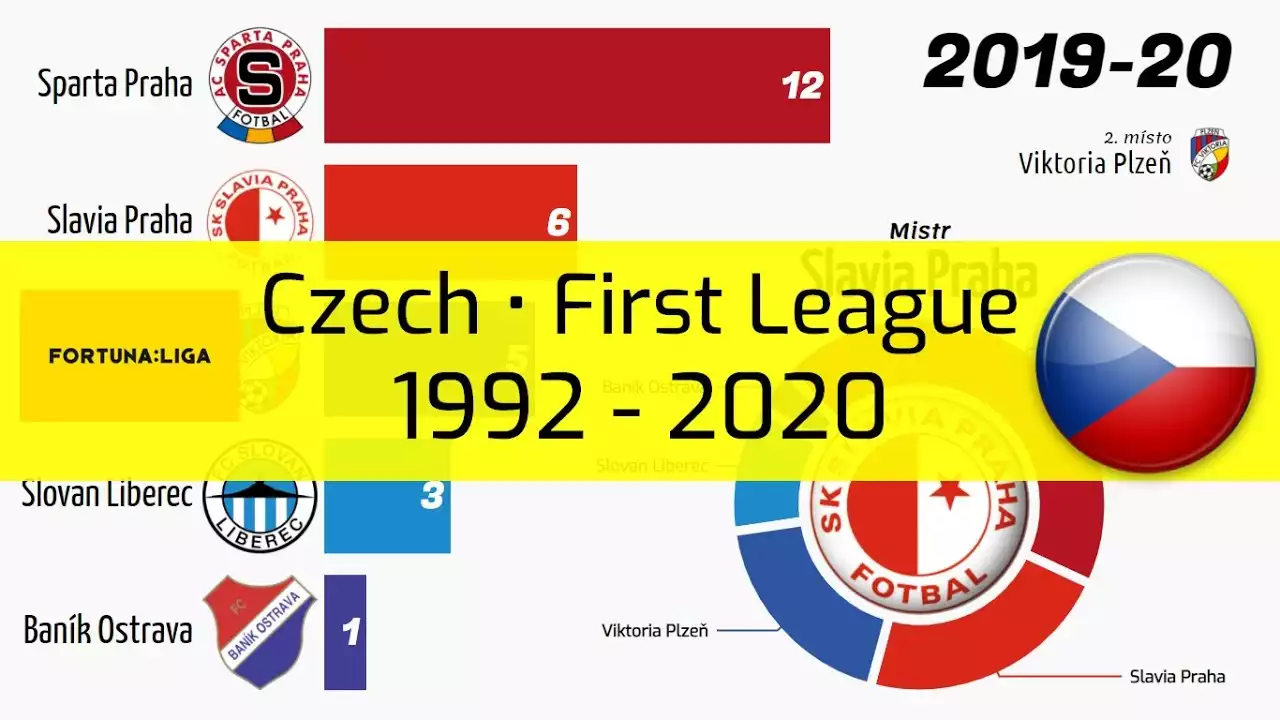Understanding the Point System in the Czech First League
The point system in the Czech First League is the foundation upon which team rankings are built. It is a methodical way of assigning value to each match result, ultimately determining the position of teams in the league table. To comprehend the point system, let's delve into how points are awarded and the significance of wins, draws, and losses.
In the Czech First League, teams earn points based on the outcome of their matches. A win grants a team three points, a draw awards both teams one point, and a loss results in zero points. These points accumulate throughout the season, reflecting a team's overall performance. The more wins a team secures, the higher their point total, which directly impacts their position in the league standings.
The point system is designed to reward teams for their success while also providing an opportunity for teams to recover from setbacks. The allocation of points reflects the competitive nature of the league, ensuring that teams are recognized for their achievements and giving them a chance to improve their position even after a loss. It creates a dynamic environment where every match is significant and can have a lasting impact on a team's standing.
Impact of Wins, Draws, and Losses on the Point System
In the Czech First League, wins, draws, and losses directly influence a team's point total and, consequently, their position in the league table. Let's explore how each outcome affects the point system and why it is crucial for teams to strive for victories.
A win in the Czech First League is highly valued, as it yields the maximum number of points – three. This means that a team can significantly boost their position in the league by stringing together a series of victories. Wins reflect a team's ability to outperform their opponents, showcasing their skill and determination on the field. Each win pushes a team closer to the top of the table, increasing their chances of securing a coveted spot in European competitions or even the league title itself.
Draws, on the other hand, result in both teams receiving one point. While a draw may not provide as much of a point boost as a win, it can still play a crucial role in a team's overall ranking. Draws demonstrate a team's ability to compete evenly with their opponents, showcasing resilience and the ability to salvage a point even when a victory seems out of reach. Accumulating draws can be a strategic approach for teams aiming for a mid-table position or seeking to stay clear of relegation.
Unfortunately, losses come with no points, which can be detrimental to a team's position in the league. Each loss pushes a team further down the table, making it more challenging to climb back up. It highlights areas of weakness or inconsistency in a team's performance and necessitates a strong response in subsequent matches. Minimizing losses and bouncing back quickly from defeats is key to maintaining a competitive standing in the Czech First League.
Tiebreaker Rules in the Czech First League
In the Czech First League, tiebreaker rules come into play when two or more teams have the same number of points. These rules are essential for determining a team's position in the event of a tie and play a significant role in shaping the league table. Let's explore the tiebreaker rules that are used in the Czech First League and how they impact team rankings.
The first tiebreaker criterion is the head-to-head record between the tied teams. If two or more teams have the same number of points, the team that has performed better in their direct encounters will be ranked higher. This criterion emphasizes the importance of head-to-head matchups, giving teams an extra incentive to perform well against their rivals.
If the head-to-head record does not provide a clear distinction, the goal difference becomes the next tiebreaker. The goal difference is calculated by subtracting the total number of goals conceded from the total number of goals scored. This criterion rewards teams that have been able to score more goals while conceding fewer, indicating a stronger overall performance.
Should the tie still persist, the team with the higher number of goals scored takes precedence. This criterion further emphasizes offensive prowess and goal-scoring ability, rewarding teams that can consistently find the back of the net.
In rare cases where the tie remains unbroken, the team with the lower number of red and yellow cards will be ranked higher. This criterion promotes fair play and discourages unsporting behavior on the field. It serves as a reminder that discipline and conduct are also significant factors in determining a team's standing.
Historical Examples of Point System Scenarios in the Czech First League
To gain a better understanding of how the point system works in practice, let's examine some historical examples of point system scenarios in the Czech First League.
In the 2018-2019 season, Slavia Prague dominated the league, securing the title with an impressive 83 points. Their consistent performances and numerous wins allowed them to establish a significant lead over their rivals. Plzen, the runner-up, finished with 69 points, highlighting the gap between the top two teams. This example demonstrates the importance of accumulating a high number of points to secure the league title and establish a clear lead over other teams.
In contrast, the 2015-2016 season witnessed a tight race for the title. Sparta Prague and Viktoria Plzen both finished with 72 points, resulting in a tiebreaker scenario. Sparta Prague ultimately claimed the title due to their superior head-to-head record against Viktoria Plzen. This example showcases the significance of tiebreaker rules in determining the league champion and highlights the impact of direct encounters between tied teams.
Criticisms and Controversies Surrounding the Point System
While the point system in the Czech First League has been widely accepted, it is not without its fair share of criticisms and controversies. Some argue that the current point allocation does not accurately reflect the quality of a team's performance and can lead to an imbalance in the league standings.
One common criticism is that the point system does not adequately reward teams for scoring goals. Despite the tiebreaker rules considering goal difference and the number of goals scored, some believe that a more significant emphasis on goal-scoring would encourage a more attacking style of play. This criticism suggests that the current system may favor defensive strategies that prioritize avoiding losses over taking risks to secure victories.
Another point of contention is the impact of draws on a team's point total. While a draw grants each team one point, some argue that it can lead to a stagnation of the league table. Teams that accumulate numerous draws may find themselves stuck in a mid-table position, neither significantly improving nor deteriorating in the rankings. This controversy raises questions about the balance between rewarding consistency and incentivizing a more ambitious approach.
Strategies for Teams to Maximize their Points in the Czech First League
To succeed in the Czech First League, teams must employ effective strategies to maximize their points and climb the league table. Here are some key strategies that teams can utilize:
1. Focus on winning: Accumulating victories is crucial in gaining points and securing a higher position in the league. Teams should prioritize offensive tactics and aim to outscore their opponents to secure the maximum three points in each match.
2. Improve goal difference: A strong goal difference can be advantageous in tiebreaker scenarios. Teams should strive to score more goals while maintaining a solid defense to create a positive goal difference that can give them an edge in the rankings.
3. Analyze opponents: Understanding the strengths and weaknesses of opposing teams can provide a competitive advantage. By studying their tactics and identifying vulnerabilities, teams can tailor their strategies to exploit weaknesses and increase their chances of securing wins.
4. Maintain discipline: Avoiding unnecessary red and yellow cards is crucial in tiebreaker situations. Teams should prioritize fair play and discipline on the field to prevent any negative impact on their position in the league.
5. Adapt to changing circumstances: The Czech First League is a highly competitive environment, and teams must be adaptable. Adjusting tactics and making strategic substitutions during matches can be key to securing crucial points and overcoming challenges.
The Importance of the Point System in Determining League Rankings
The point system is a fundamental aspect of the Czech First League, as it determines the league rankings and shapes the narrative of the season. It provides a structured framework for assessing team performance and creates a sense of competitiveness and excitement throughout the league.
The point system serves as a fair and objective measure of a team's success, rewarding consistent performances and highlighting the most deserving teams. It allows for a clear distinction between those at the top of the table and those fighting to avoid relegation. The point system adds meaning to each match, as every point earned or lost can have a significant impact on a team's standing.
Ultimately, the point system not only determines the league champion but also affects the qualification for European competitions and the relegation battle. It is a vital component of the football ecosystem, shaping the destiny of teams and providing a basis for analyzing and comparing their performances.










.png?size=50)